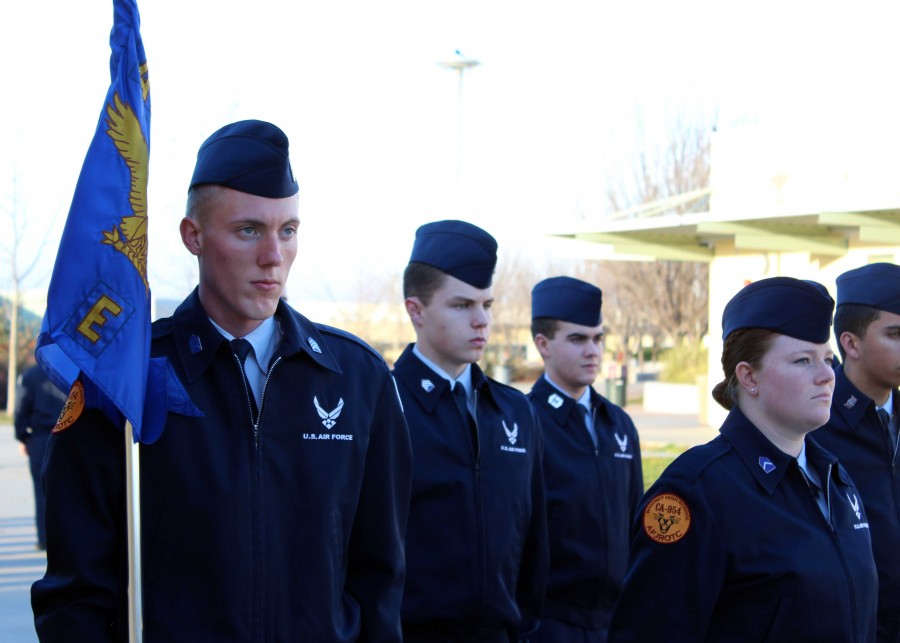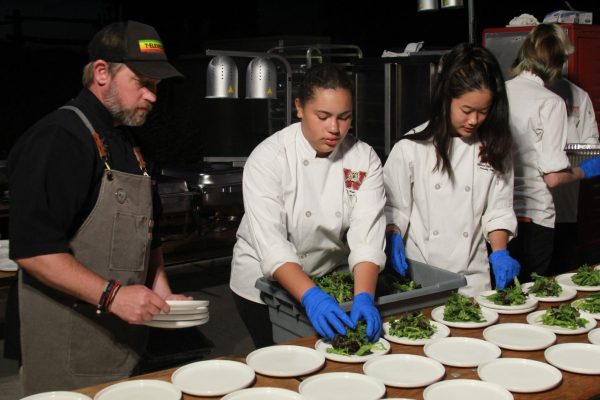Eric Leverenz was recently accepted into the United States Air Force Academy
“Aim High … Fly-Fight-Win” are the words Eric Leverenz now lives by. Leverenz is one of 1,200 appointments from a list of 9,700 applicants to the United States Air Force Academy.
The Academy was founded April 1, 1954 in El Paso County, Colorado. It is both a military organization and a university. Much of the Academy is set up like most other Air Force bases, but the faculty and cadet wing are set up in a manner resembling a normal university.Eric Leverenz is one of 1,200 appointments from a list of 9,700 applicants to the United States Air Force Academy.
“The first time I heard about the academy [was] freshman year when I joined the JROTC program here. I didn’t really find it interesting as an option for college until my junior year because that’s when I began to think ‘Alright, where do I really want to go to college? What do I want to do with my life?’ By that point I had already decided that I really want to go into the military for college either it was through a college ROTC program or through the academy,” Eric Leverenz said.
Leverenz began the process before he even filled out an application by going to a Summer Seminar hosted at the Naval Base Academy. Summer Seminars include different activities as well as a glimpse of what life on campus would be like.
“I knew that he was looking for a career in the Air Force, so I wasn’t really surprised when he made it in. All I could was hope that he got accepted, so I was really excited and happy [when] he made it in,” Austin Leverenz said.
The application process for the Academy involves not only a regular application, but also a congressional nomination. The nominations have to come from a state senator, a local congressman like Tom McClintock, or the vice president.
“I went for both the senators and McClintock. I never heard back from [Barbara] Boxer. [But Diane] Feinstein I heard back from and I got a nomination. I went for the nomination from McClintock, and I would have gotten that one too, but when I got word that he was interested, I had already heard back from Feinstein. So I told them I didn’t need it, and to give it to someone else who does,” Leverenz said.
Each congressional representation has a separate application process. The vice president requires an online application to be filled out while the for the others, you can request a packet.
“It’s pretty much like a college application where it asks for your name, address, phone number, all that kind of personal information. I had to get official transcripts and letters of request from them, and I had to write essays. If you get through all that and you get through the screening process, then you proceed; they look at your application and then they interview you,” Leverenz said.
Because of the two different applications, overlap in the acceptance process can occur.
“I did an early action [application] so I finished that way before the nomination process even started. So I got a letter from the Academy, saying they had a letter of intent for me. It basically said that if I got my nomination letter, that should guarantee my admission. I got my admissions letter before I got an admissions letter so my excitement was for that because I realized I’d probably get in. So when I got my congressional nomination, I was like ‘cool’ because hopefully I’d get in. Then when I got my actual acceptance letter, it all came together. The day I received the letter was not as exciting as the day I got the letter of intent,” Leverenz said.
Each cadet graduates with a bachelor of science degree and a commission as a second lieutenant in the Air Force.
“In regards to the Air Force, after the academy I want to be a pilot. That just seems to be the one that interests me the most, the one that seems to apply what I’m best at in school regarding math and science,” Leverenz said.
Being accepted into the United States Air Force Academy is something the admissions office recommends you begin training for in junior high school. Because of the school’s competitive nature, the academy bases it’s acceptances off of three pillars: academics, athletics and character.
Leverenz said, “Definitely try to do the best you can, the number one thing [the academy] looks for is a well-rounded person. They really are looking for someone who fulfills all three of those pillars. You just have to go out and do your best at everything you can do.”
by OLIVIA GRAHL






![On the stage, Daniel Bozinovski and Rachel Treto play their part as Tom and Hannah in the show “The Cast List”. The show was about a group of students who were told about their cast list for the play “Romeo and Juliet.” The Theater I students were in preparation for their first showcase of the year. Students went over their lines during all of their class for the past two months. “[We put in] a lot of rehearsal, practicing lines, making sure you have everything memorized and making sure you are ready to go in and not forget anything,” Nathan Weeks said. Photo by Megan Kubas.](https://www.whitneyupdate.com/wp-content/uploads/2024/05/IMG_4085-600x396.jpg)
